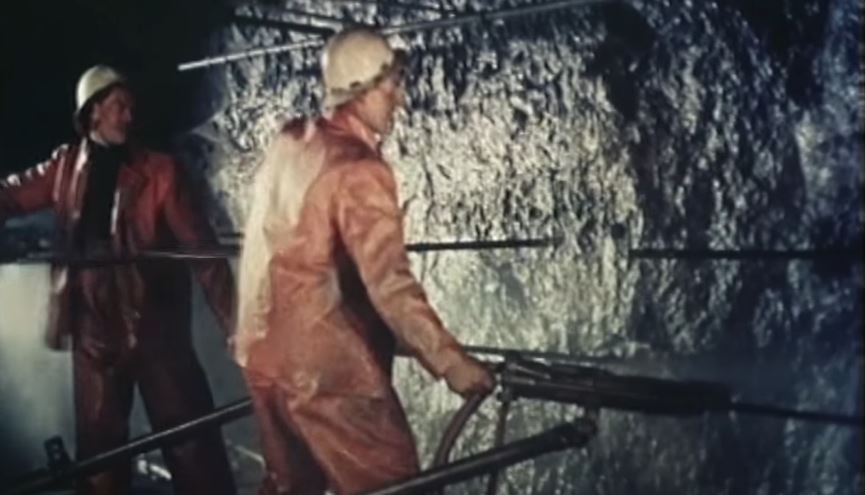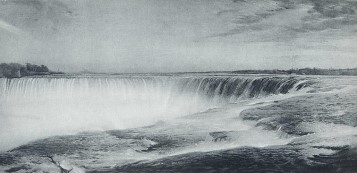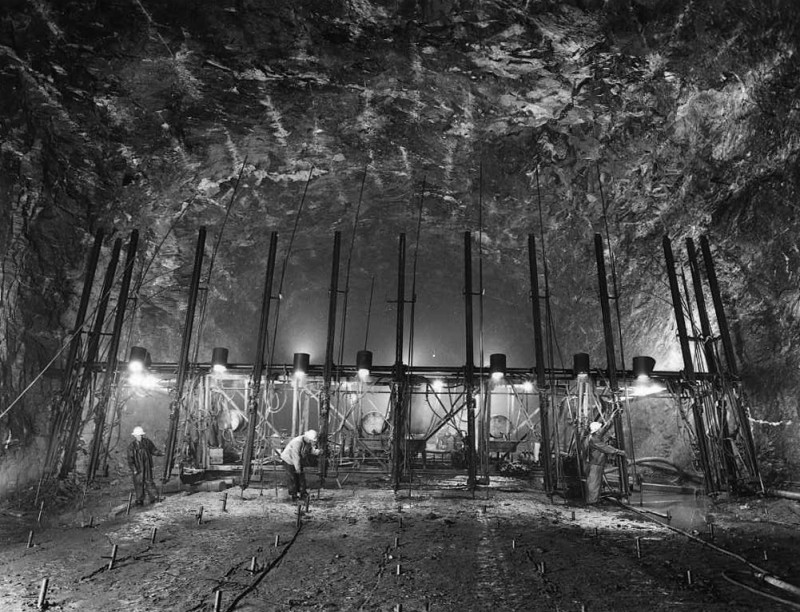
Records in rock drilling
During the 1950s Vattenfall broke a number of records for power station construction in Harsprånget and Stornorrfors. This was achieved thanks to skilled professionalism and 'the Swedish method', technology developed by Swedish companies Atlas Diesel and Sandvik in cooperation with Vattenfall.
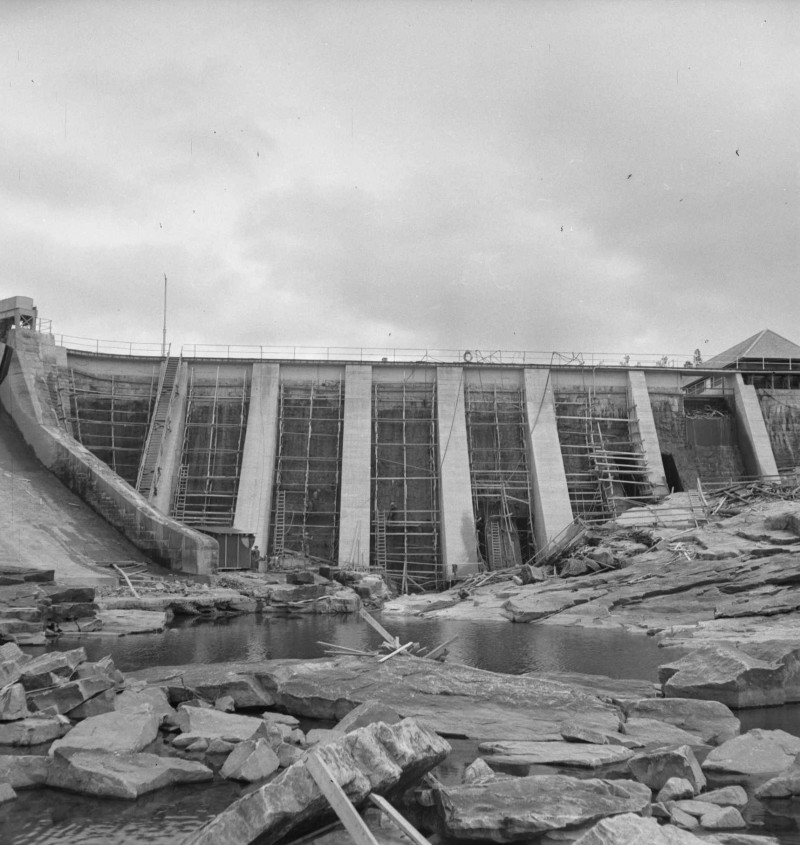
Harsprånget power plant. Year: 1950 | Place: Harsprånget | Creator: Vattenfall | ID: VF000067
When the power plant in Harsprånget was opened in June 1952 it was in a class of its own. It was the largest hydropower plant in both Sweden and the world. The building itself would beat a number of records.
The power plant, like several previous hydropower plants, was built underground. The machine room was located 100 metres down into the bedrock. The water was fed into and out of the plant via a headrace and a tailrace tunnel. The tailrace tunnel was 2.9 km long, 13 metres wide and 15 metres high – with a cross-sectional area of 190 square metres. The biggest tunnel of its kind.
The construction of Harsprånget coincided with the development of the rock drilling technique known as 'the Swedish method'. It was developed by Atlas Diesel, now Atlas Copco, and Sandvikens Jernverk. It consisted of lightweight rock drills equipped with pusher legs and hardened metal bits. These drills could be operated by one man who, with the help of one 'knee' on the drill, could feed the drill forward. 'One man, one machine', as the advertising stated. Carbide tips also meant that the tips did not need replacing as often. Thanks to the lighter and portable equipment, drilling work could be completed much more effectively than before. During Vattenfall's tunnel projects the method could be tested and developed on a large scale.
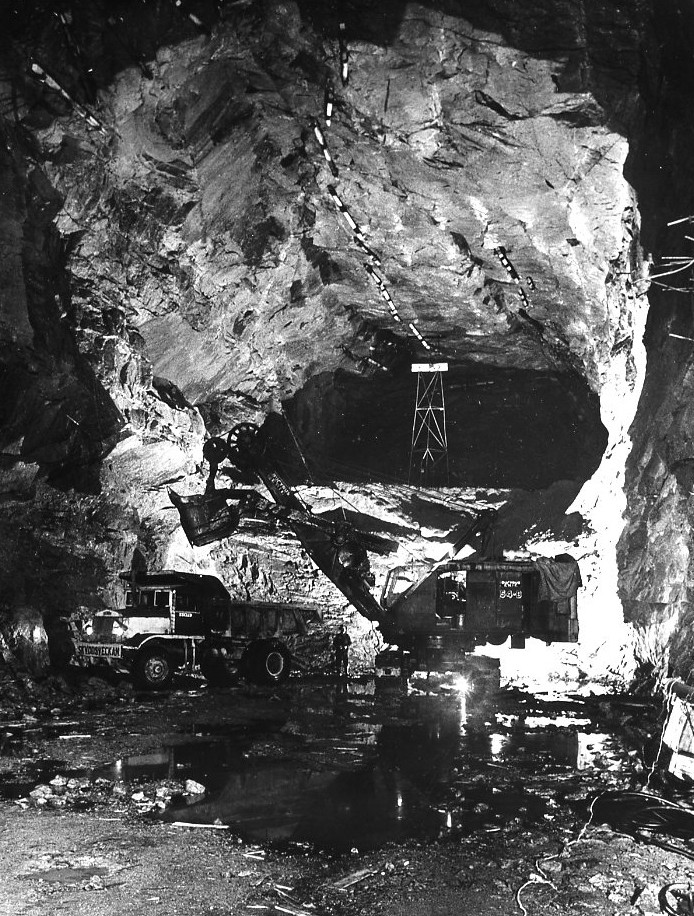
Harsprånget power plant. Tailrace tunnel. Year: 1949 | Place: Harsprånget | Creator: Vattenfall | ID: VF000068
Tunnel blasting was a substantial and expensive part of the construction work at Harsprånget. The technique applied therefore aroused huge interest, including detailed studies of working methods and development of machinery. The partnership between Vattenfall, Atlas Diesel and Sandviken helped make Sweden one of the global leaders in tunnelling technology.
New record in Stornorrfors
Another record was beaten during construction of the Stornorrfors power plant, which came on line in 1958. These years were justifiably referred to as 'Vattenfall's record years'. At that time, the power plant was ranked as the world's largest tunnel project. The 4-km tailrace had a cross-sectional area of 390 square metres, then the largest in the world. To create the rock caverns, 2.6 million cubic metres of hard rock had to be blasted and removed. For Atlas Copco and 'the Swedish method', this was another successful reference project, 'a triumph of rock drilling machines and carbide drills'. Fifteen years of development had now come to fruition.
Work on Stornorrfors attracted huge interest from engineers in a number of countries. Vattenfall therefore produced an information film to document the work. The film was entitled 'Bergtagen', and was shown as a short film in Swedish cinemas. The main roles were played by the drilling manager Forsgren and his men. However, the tunnel workers' black clothes did not work on the colour film. So the men were dressed in orange rubber suits instead. The construction manager at Stornorrfors is said to have been so pleased that he later had all the miners wear this colour underground.
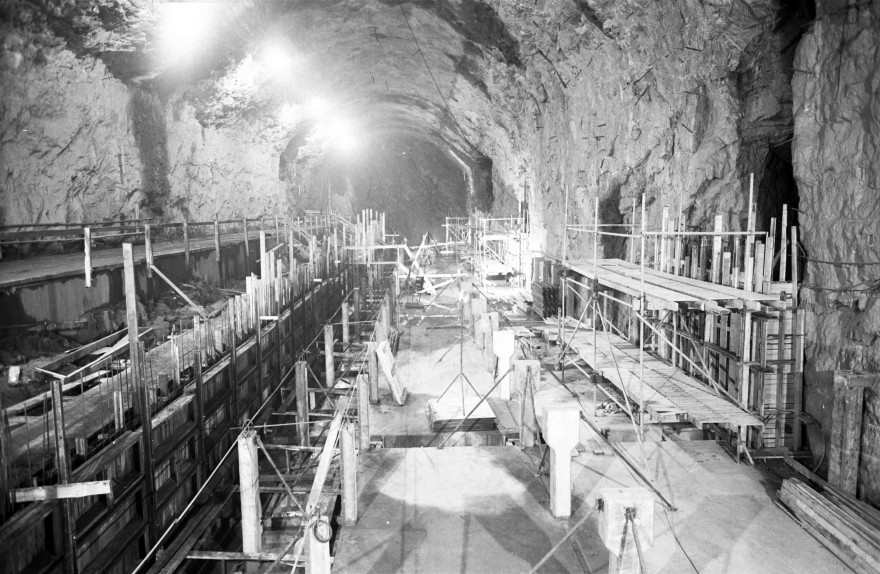
Stornorrfors power plant Year: 1950 | ID: VF000072
A less flattering tunnel record more recently has been the tunnel through the Hallandsåsen ridge. Vattenfall's subsidiary Kraftbyggarna was commissioned to drill the almost 9-km tunnel in 1993. It was scheduled to be finished in 1997. Kraftbyggarna used the Hallborr tunnel drill for the task, which was said to be able to drill through 100 metres of rock per week. The technique had been used successfully to construct the Klippen hydro power plant. However, the drill could not cope with the type of rock at Hallandsåsen and stopped after 13 metres. Kraftbyggarna was forced to change drilling technique, but further problems followed and the company was forced to abandon the project. Vattenfall was forced to pay SEK 700 million compensation to the client Banverket, the Swedish Rail Administration.

Stornorrfors power plant. Year: 1955 | Place: Stornorrfors | Creator: Vattenfall | ID: VF000071
Video player requires marketing cookies.
To view this content please click here to allow marketing cookies.
The Swedish Ladder Drilling Method in Stornorrfors (in Swedish)

